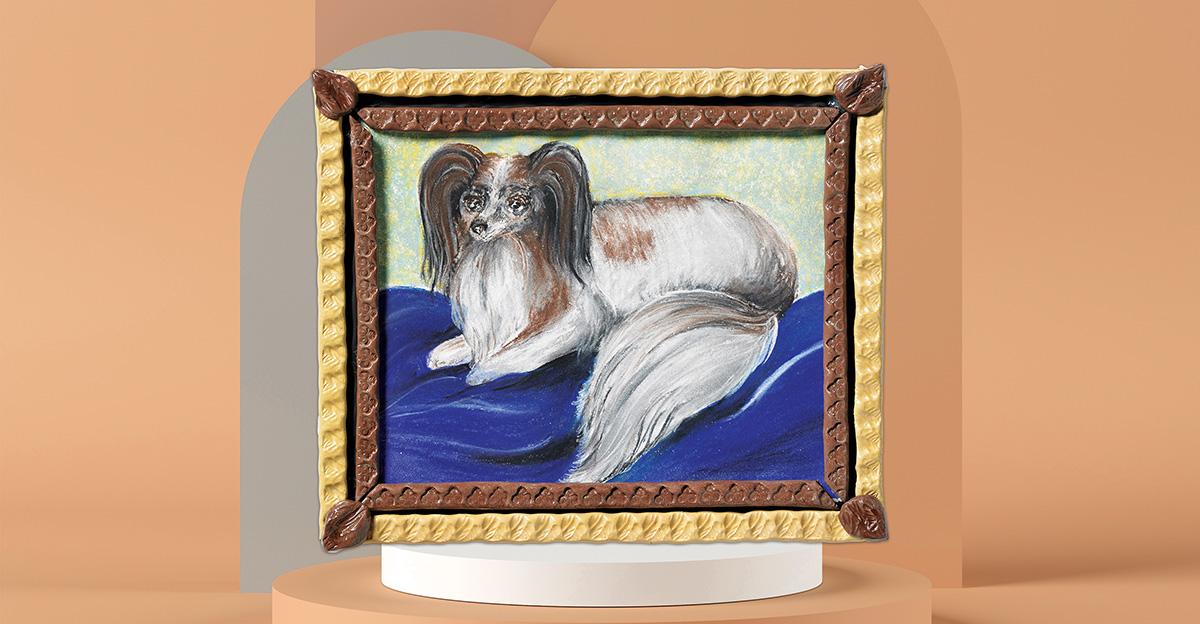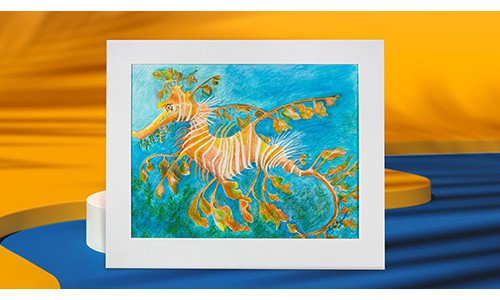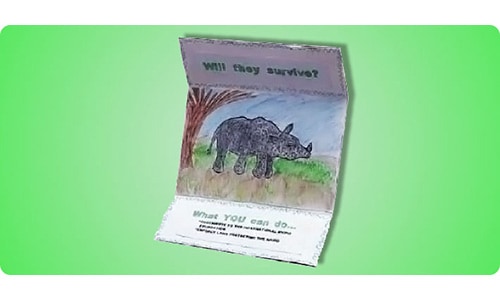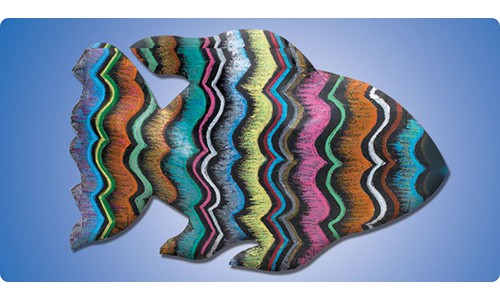The first images of dogs were painted on cave walls. These dogs served as protectors and hunters. As man developed, so did his relationship with dogs. While dogs continued to be used as protectors and hunters, they soon warmed their way into people’s homes and hearts. What better muse for an art lesson plan than dogs?
By the time of the Renaissance (1300-1600), different breeds of dogs developed, and many small breeds turned into lap dogs or companion dogs for the wealthy. You can find lavish paintings depicting these breeds, often seated on a velvet cushion or on the lap of their owner. These little dogs became status symbols. Fast forward to the 1800s, and with the start of the American and British Kennel Clubs, standards for dogs were established, which led to the commission of more dog portraits in art.
If you research, you will see that all cultures depicted our four-legged friends in different forms of art, from paintings to sculpture, but no one has made them as lavish in appearance as the artists of the Renaissance. From the velvet and baroque cushions to the gilded frames, Renaissance Dogs were portrayed in a luxurious style.
Dogs of the Renaissance Project
In this lesson, you can research images of dogs and determine how you would portray your own furry pet, a friend’s pet, or a dog breed you like in its own lavish style. Is your dog’s style more like Scooby Doo or Pongo? Movies about dogs are ubiquitous. Classics like The Call of the Wild or animated movies like The Secret Life of Pets can give you insights into our favorite pets. The library is full of stories created about dogs, and the internet can show you breeds you never knew existed. Check out the Pumi breed, one of the latest additions to the American Kennel Club!
Oil or chalk pastels are the perfect media to use for this project. They allow you to create the rich colors of the Renaissance in your portrait. However, if pastels are not available, consider colored pencils, paint, or crayons, using a variety of techniques and pressure to highlight the image.
Once you have created a lavish portrait, you will have to build a lavish frame to show off your dog. The original lesson plan uses air-dry clay, but scrap boxes and cardboard can also be used. Cut out a frame skeleton to fit around your portrait, and use found materials, like cardboard scraps, to create a dimensional frame. Consider adding shapes and objects that will accent your dog’s style. Once completed, gild it with gold paint prior to showing off your dog’s lavish portrait.
View the Lesson Plan: Dogs of the Renaissance
Tips for the Dogs of the Renaissance Project:
- Research Renaissance artwork and framing styles
- Create and frame composition in a reflective style
- Use patterning and found objects in your frame design
More School Specialty and Sax Animal Art Lesson Plans
Want to try something else? Be sure to check out these other art lesson plans and view our Art Lesson Plan collection for even more.
Share Your Students’ Artwork and Enter for a Chance to Win $250!
We want to celebrate the wonderful pieces students have created! We are looking for student artists and giving them an opportunity to shine! Submit their artwork to be considered for our next featured student artist and a chance to win a merchandise certificate worth $250 for the student and the teacher who inspired them. Original artwork from students of all grade levels is eligible, and the online submission process is simple. Visit our Student Art page for details.
Mary Reilly
Mary Reilly received her BA with an emphasis in textile design from Mount Mary University in Wisconsin. She studied at the Wetterhoff Institute of Craft and Design in Hämeenlinna, Finland, as well as took numerous post-graduate courses in fine arts. Mary has over 15 years of experience with Sax Arts & Crafts, developing and shaping a national team of Art Consultants who have conducted art education and professional development workshops to elementary, middle, and high school art educators across the United States and Canada.
Read more by Mary Reilly
Nadine Dresbach
Nadine Dresbach received her Masters and Undergraduate Degrees in Art Education from Kent State University. She began her teaching career at Canton City Schools and Kent State University in Ohio. In 1995 she was hired by Sax Arts and Crafts as an Art Consultant and Category Sales Manager representing School Specialty at conferences and professional development sessions. Nadine also creates artwork and lesson plans for the company. Her other teaching experiences include instruction and Internship Supervisor for Winthrop University in Rock Hill South Carolina as well as work for the Rock Hill and Union County School Districts and St. Anne Catholic School.
Read more by Nadine Dresbach











Leave a Reply